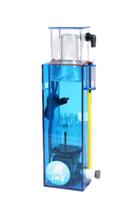
Toilet Cisterns
About Toilet Cisterns
Flushing the toilet is something everyone does multiple times every day. But not many people think about how the toilet cistern works unless something goes wrong. Many people don’t even know what kind of flushing system they are using.
In the past decades, everything in our homes has gotten smarter. We went from rotary phones to smartphones, CRT televisions to smart TVs, incandescent bulbs to wi-fi controlled smart bulbs, and whatnot. This advancement is also reflected in our bathrooms. The toilet flushing system used to consist of an overhead tank with a lever to open the valve. But these days, you will find an automatic flush that cleans the toilet as soon as you get up from the toilet seat. Read this article to find out more about them. Having a better understanding of toilet cisterns will help you make better purchase decisions.
Different types of toilet cisterns
One of the essential parts of the flush system, besides the toilet bowl and toilet drain, is the flush system. While there are toilets that do not have a flush system, such toilets are rather inconvenient for the modern lifestyle. Therefore, people make provision for installing a toilet cistern during the designing phase of a house or a building. But you have to keep in mind that not all flush systems work the same way. Here is a list of four of the most popular types of flush systems out there. In this article, you will also find some wonderful tips that you can follow while shopping for cisterns online.
Ballcock toilet cistern
This is the earliest and most basic type of flush system and also the most common type. It consists of a combination of a ballcock along with a plunger. The ballcock stays on top of the water and keeps the tank filled with water all the time. As the ball drops when the water empties out of the flush tank, the rod that connects to the ballcock allows the water to fill inside the tank. It is the plunger that controls the flushing. Raising the plunger opens up the tank, and the water flows out into the toilet bowl. One common problem with this type of cistern is that the plunger often fails to create a proper seal and hence results in water leakage.
Flapper flush valve
The flapper valve is not very different from the ballcock system in its functioning. Instead of a ball, this system makes use of a flapper that floats above the water. And the valve that fills the tank with water opens and closes depending on the position of the flapper. The benefit of this system is that as the flapper does not take up as much volume as a ballcock, it is possible to make the toilet cistern more compact. But one downside of the flapper system is that they are really slow to fill up as the pressure exerted by the flapper will be significantly less than a ballcock.
Double Cyclone flush system
Both the flapper and ballcock systems simply use the power of gravity to flush the toilet. In this regard, they are very primitive and use up a considerable amount of water in the process. There has been a consistent effort to reduce the amount of water that the toilet cisterns consume. The double cyclone system makes use of the pressure difference to flush the toilet bowl effectively without using a lot of water. This system makes use of two separate nozzles that push water into the toilet bowl in opposite directions. This creates a cyclone effect in the bowl and flushes the system using less amount of water.
Dual system
While the double cyclone system reduces the amount of water needed for flushing, it is hard to find replacement parts for them once something goes bad. The dual system, on the other hand, uses gravity as the first two toilet cisterns. But in this case, there will be separate levers. The smaller lever is for non-solid waste and uses less water. The other one is for solid waste and works normally. The dual system allows the user to control water usage. These days, pretty much all toilet cisterns make use of the dual system.
Tips on how to buy Toilet Cisterns
A toilet is only as good as a toilet cistern. For a toilet to be really useful, the flush system should work well and seamlessly. Furthermore, it should also look good in the bathroom. That is why finding the right type of flush system can be harder than you might think. As there are thousands of different models of them, picking one out of them can be tricky. But it will be easier if you know what factors to consider in them. Here are a few tips that you can follow while shopping for them.
- Type – The trickiest part of buying a toilet cistern is to decide what type of system is right for you. There are newer systems that consume less amount of water and cleans the toilet bowl just as effectively as the older systems. But, not surprisingly, they are expensive. And also, newer systems are more complex, and it might be harder to fix them once something breaks.
- Size – The size of the cistern determines how much water it can store. The larger the cistern is, the more water it can store. While having a smaller tank might not be a problem all the time, it can be annoying if the bowl is not clean after the first flush. Then you will have to wait for a while for the tank to fill again.
- Colour – Always select a cistern that has the same shade of colour as the toilet bowl. If the toilet bowl and toilet seat are of different colours, then you can either go with the colour of the bowl or the seat. Choosing a third colour for the cistern is not a good idea.
- Design – It is a fantastic thing that toilet cisterns come in a lot of different designs. The most affordable ones are simple plastic cisterns. There are better ones that compliment the design of the bowl and uses ceramic as the bowl. You can hide the cistern inside the wall as well. While this takes a little more work, putting the cistern behind the wall will help you get more usable space in the bathroom.
There are many more essential toilets parts to get a toilet to get working. These include bidets, toilet seats, toilet drains and many more. The good news is that you can find all of them easily using our shopping search engine . It will also let you compare the prices and features of different models. There is no better way to find a better product than to compare it against a similar one. Finally, don’t forget to check out other toilet parts from the bathroom fixtures category.
Question & Answer
Are toilet cisterns interchangeable?
Some flush systems are interchangeable, while others are not. Interchangeable cisterns mostly use basic technology. You can replace a flapper system with a ballcock system. If you replace one with the other, the toilet will work just fine. The only thing you have to take care of is to use a pipe reducer or increase depending on the pipe size of the newer system. But if there are more complex parts in the system, it might not be able to replace them with another one. Always make sure whether your flush system is interchangeable or not before buying a replacement.
How does a close coupled toilet cistern work?
In a close-coupled flush system, the cistern and the toilet bowl will be coupled together. That means both of them will look like a single piece. This is very different from the old-style flush system that uses a tank that sits a foot or two above the toilet bowl. The main reason for using a close-coupled system is for giving the bathroom a more modern look. The working of a close-coupled system can be similar to a flapper system or a cyclone system. The Ballcock system is generally not used in close couple models as it requires the tank to be larger.
Why do toilet cisterns crack?
One of the main reasons why people have to replace their old flash system is because of the formation of cracks on the flush tank. But why do cracks appear on them? Well, there are many possible reasons. The most obvious one is the ageing of the flush tank. Because toilet tanks are holding water in them all the time, this causes the material to weaken over time and crack. Another possible reason is the small impacts. Sometimes even a small impact on a ceramic tank can cause small cracks to form on the surface. This crack grows bigger and bigger and causes the tank to leak.

